Australian Geographic Nature Photography Prize is so good, you can tell it’s not from the art world
This photography exhibition is almost shocking to witness – and in stark contrast to our ludicrous art prizes, where judges are rarely chosen for their competence.

The quality of this exhibition tells you at once that it does not come from the art world. The work is too good; it has been competently selected and competently judged. There are clear criteria for each category. The judges know exactly how to apply those criteria to determine the best works, and even if we do not agree with a particular decision, we have to admit that each one is sound and can be justified. How often can we say any of this about art prizes in Australia? Almost never.
The judges of our art prizes are rarely chosen for competence. They are chosen, often, because they are powerbrokers, operators in the artworld mafia, or celebrities. There are no clear criteria for the categories they are meant to judge: look at the way the Sulman Prize, as well as the Wynne and other purportedly landscape prizes have been debauched in recent years. What is landscape today? Almost anything, as long as it doesn’t look obviously like one.
And thus no professional or accountable process of judging is possible. When ludicrous winners are announced, predictably and repeatedly, everyone involved smirks in smug self-satisfaction. They like to feel they have transgressed conventions that have long been in ruins and congratulate themselves for having, as they imagine, challenged power structures, when they themselves represent the new power structures of the art world.
So walking into this exhibition is almost shocking, as though someone accustomed to working in an asylum and among the seriously deranged were to go out into the street and meet normal people who are not delusional. We have to adjust our expectations; we can encounter these works, produced with skill, honesty and commitment, in the same spirit.
The exhibition also reminds us that it is still possible to see the world and connect with it, but that to succeed in that we need patience, attention and the willingness to give ourselves to the task. It takes a certain self-abnegation to spend countless hours in the wild, in the cold, at night, or diving to the depths of the sea, just as it does to draw from nature or paint a landscape and seek to articulate what it may suggest to us about our own existence and a greater and more enduring world beyond our daily concerns.
The first category in the exhibition is indeed landscape, simply and effectively defined for the purposes of the prize. The winner is a remarkably clever work that looks at first sight like a ghostly view of trees and a river beyond, but is in reality an aerial view of what is known as an alluvial fan, in the Joseph Bonaparte Gulf, which I confess I did not know was the great gulf south of the Timor Sea and west of Kakadu in the Northern Territory; it was named by Nicolas Baudin in 1803.
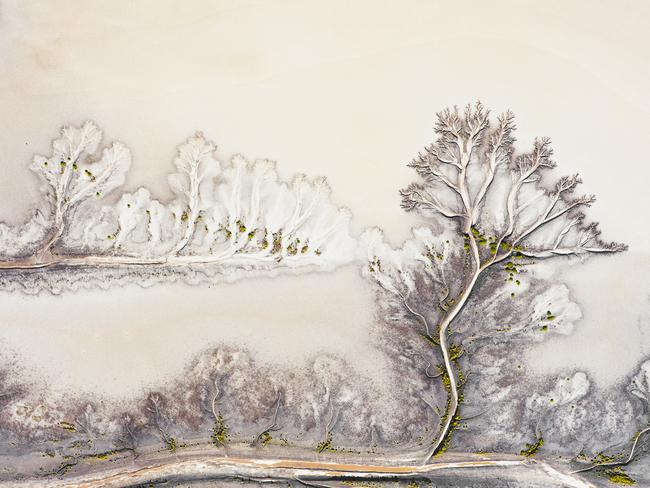
When you realise that this is the aerial view of a land formation caused by water flows, you may imagine that it is like those dry, fossilised riverbeds that you see from the air when flying over the centre of dry countries like Australia or Iran; but in fact alluvial fans – another thing I have just learned – are the opposite, they represent the pattern of diffusion of flood waters and alluvial sediments. Hence the softer outer ends of the forms, more akin to the crowns of trees than to desiccated river systems.
All of the finalists in this category are impressive, but I should mention the runner-up, which is remarkable too: a view of a rocky formation near Broken Hill in the moonlight, with an electric storm on the horizon. It’s also worth mentioning, incidentally, that each label includes thorough technical information about the camera employed, the aperture and shutter speed, as well as the use of any aids, such as tripod or drone.
A full declaration like this should be mandatory in painting prizes too, when so many pictures are made not just from photographs, but with various kinds of digital aids or even digitally printed and overpainted. All this is simply dishonest unless openly declared. But the rules for painting prizes are currently completely dysfunctional: at once ignored and out of date, incapable of dealing with the new world of digital technology and AI.
The next category is for black and white pictures. The winner is a powerful image of a desert oak rising up against the mass of Uluru, using infra-red to make the tree stand out as black against a light background. Other shots use black and white to dramatise the struggle between two male giant cuttlefish, or the way a gecko camouflages itself against a granite wall. A photographer of Chinese background has taken a beautiful and austere shot of two bleak winter trees silhouetted against the white of the snow which recalls the aesthetic of classic Chinese ink painting, also executed in black and white.
The category of animals in nature is won by a striking shot of a male cuttlefish swimming past a cloud of his own ink – a “galaxy of ink” as the judges described it – after an inconclusive confrontation with two other males. If there were a cuteness category, it would certainly have gone to a picture of a tiny honey possum hanging by its tail between two banksia flowers.
Urban animals is an interesting category, not least because while human activity is so often disastrous for wild creatures, a few thrive in our company. The winner is a green tree-frog appearing in a fortunately pristine steel toilet bowl.
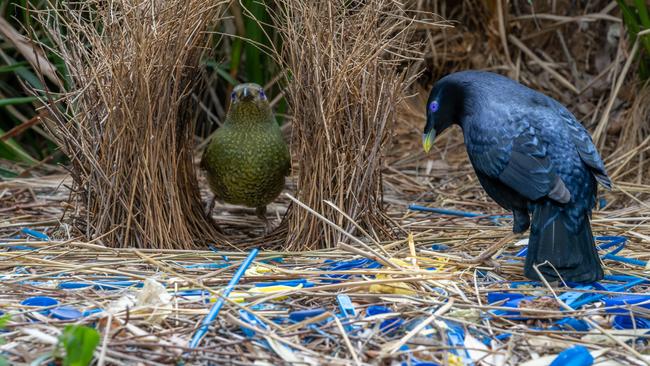
Our impact is one of the most interesting and of course disturbing categories. There are sad images, like a dead owl on the side of the road, and happier ones like two in which bottles on the seabed have become habitats for creatures: in one case a blue-ringed octopus has sheltered in the neck of an old beer bottle, with her maturing eggs; in the other a small fish has similarly taken refuge in a bottle.
There are depressing images like the aerial view of nightmarish suburbia encroaching on forests that are vital koala habitats at Nambucca Heads. The houses are so cramped and occupy so much of their blocks that there is no justification for invoking the dream of the suburban house and garden; if one is going to live in a slum like this one would surely be better off in a properly designed block of flats with a decent park – or bushland – outside.
The winner in this category is well-deserved and particularly interesting: it is an 85-minute time exposure of the sky taken in the Pinnacles Desert in Western Australia; in the foreground stands a natural formation that looks like a giant menhir raised by some megalithic civilisation; in the background the sky is crisscrossed by hundreds of lines of light, and on the right an alarming grid of illuminated lines, all of which represent the paths of satellites circling the globe. This picture does not illustrate any immediate tragedy, but rather a long-term development that is slowly changing our very relationship to the natural world.
The Junior category includes some outstanding entrants, including the winner, a picture of a female wolf spider guarding the entrance of her burrow, where a very close-up shot with shallow depth of field dramatically emphasises the eyes and fangs of the subject. There are several other remarkable shots, including three by one very talented 17-year-old girl – including of an osprey that has just caught a fish, and two presumably by her 12-year-old sister, one of which is of two dragonflies mating.
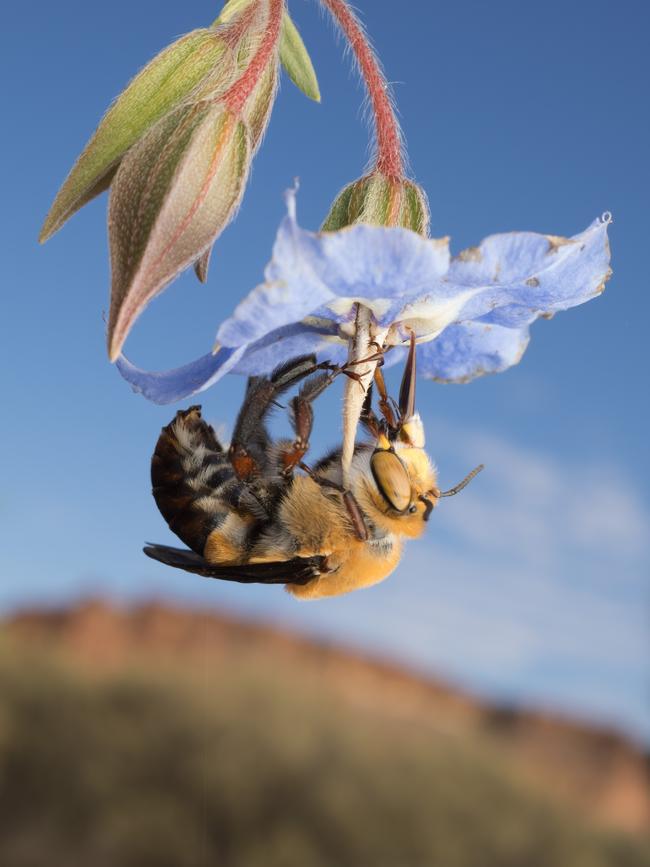
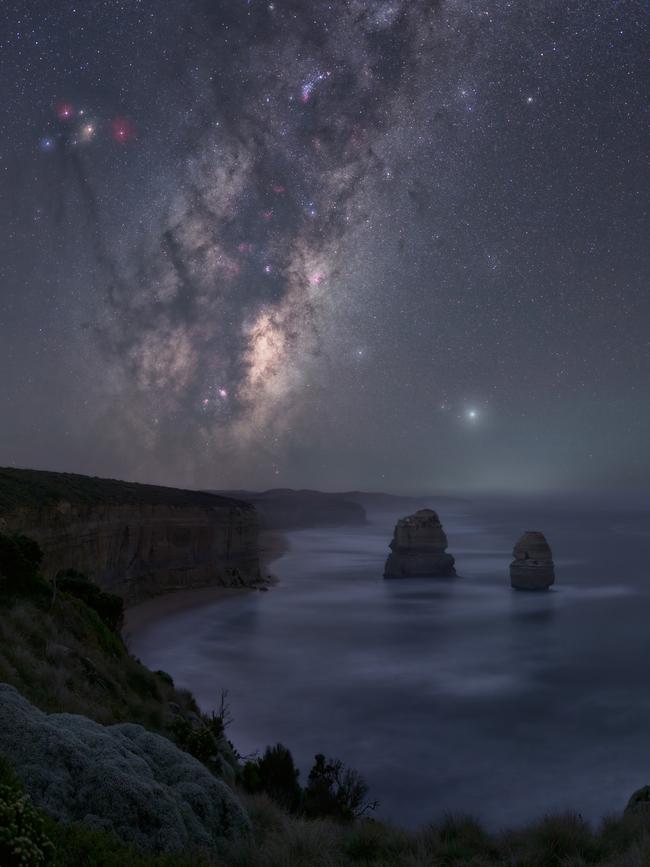
Macro is a category made up of shots that are very close up but not seen through a microscope. The winner is of a bee suspended upside down sipping nectar from a blossom. Another captures something that would normally be invisible to the naked eye, a cloud of spores released by a mushroom growing on a tree-trunk, or again an improbable creature that looks something like a seahorse made of loosely-woven thread, or a larval octopus shot in the dark depths of very deep waters. Threatened species obviously make a poignant series; the winner is a shot of a golden seahorse surrounded by golden light in a field of coral; also impressive is a picture of a turtle submerging into a sea dappled with light as well as a mother flying-fox carrying her offspring, a couple of shots of endangered black cockatoos, and a watchful numbat.
The final category, a fitting complement to landscape as the opening one, is Astrophotography, pictures of the night sky which, as Emmanuel Kant observed, is the most sublime thing in our experience.
All the finalists are both sensitive and technically accomplished, but the winner is deservedly a picture of the moon rising over Lake Mungo; the image, a fusion of several shots with different exposures for the foreground landscape, the moon and the starry background, achieves an almost surreal vividness and reminds us of the artifice that is needed, even in photography, to produce an equivalent of the spontaneous experience we had before a scene.
Other pictures of celestial phenomena, such as the Aurora Australis, are also impressive, as well as a magnificent display of stars above a bottle tree in the Kimberley desert – of course the intense darkness of these remote places, far more absolute than anything we encounter in the cities, reminds us of the pervasive problem of light pollution which effectively deprives so much of the world’s population of that most sublime of sights.
The overall winner is a picture of a firestorm during the 2019 fires – that bushfire season which seemed epoch-making at the time but was soon overshadowed by the worldwide Covid pandemic. Meanwhile the drought ended, the rains came, the bush regenerated and grew lusher and more abundant than ever, ready for a new dry season, a new unprecedentedly hot summer and a new season of destruction.
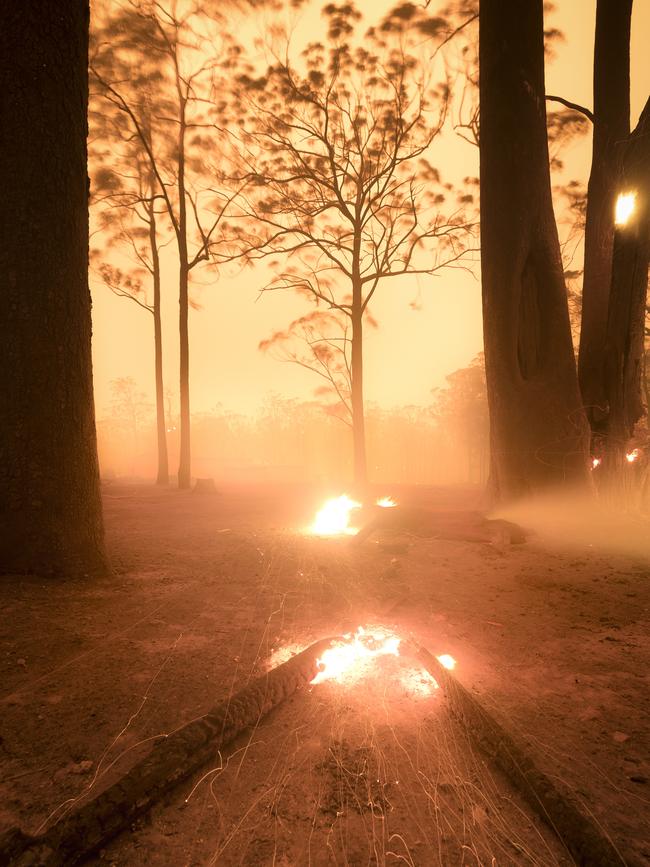
It is not easy to convey the unimaginable intensity of the heat of fire on this scale, or the terror of a blaze driven onwards by violent and unrelenting winds. But this photograph vividly evokes the hellish yet almost mystical radiance in the distance, while two burning logs in the foreground serve as perspectival cues to lead the eye into its intolerable heart; in the foreground meanwhile, a fine calligraphy of red lines marks the path of the burning sparks blowing in the wind and gives some idea, in what otherwise could appear to be a scene of stillness, of the violent wind that is driving the conflagration and which at any point could carry these sparks to start another fatal outbreak.
The Australian Geographic Nature Photographer of the Year competition is produced by the South Australian Museum, showing until October 29.



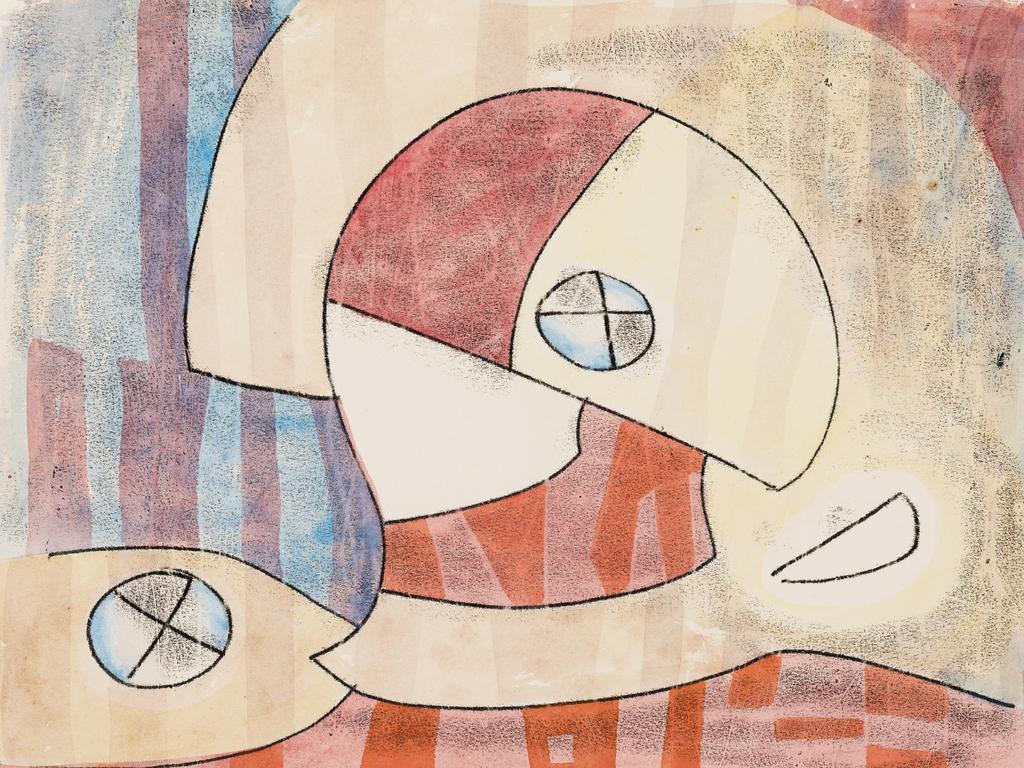

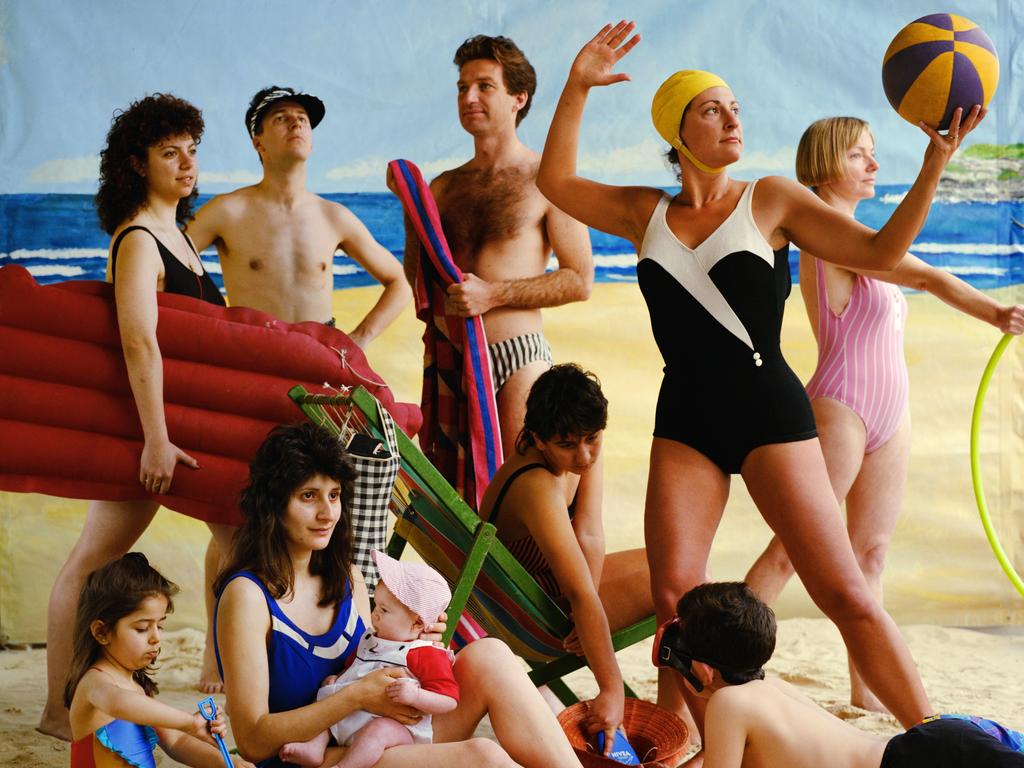
To join the conversation, please log in. Don't have an account? Register
Join the conversation, you are commenting as Logout